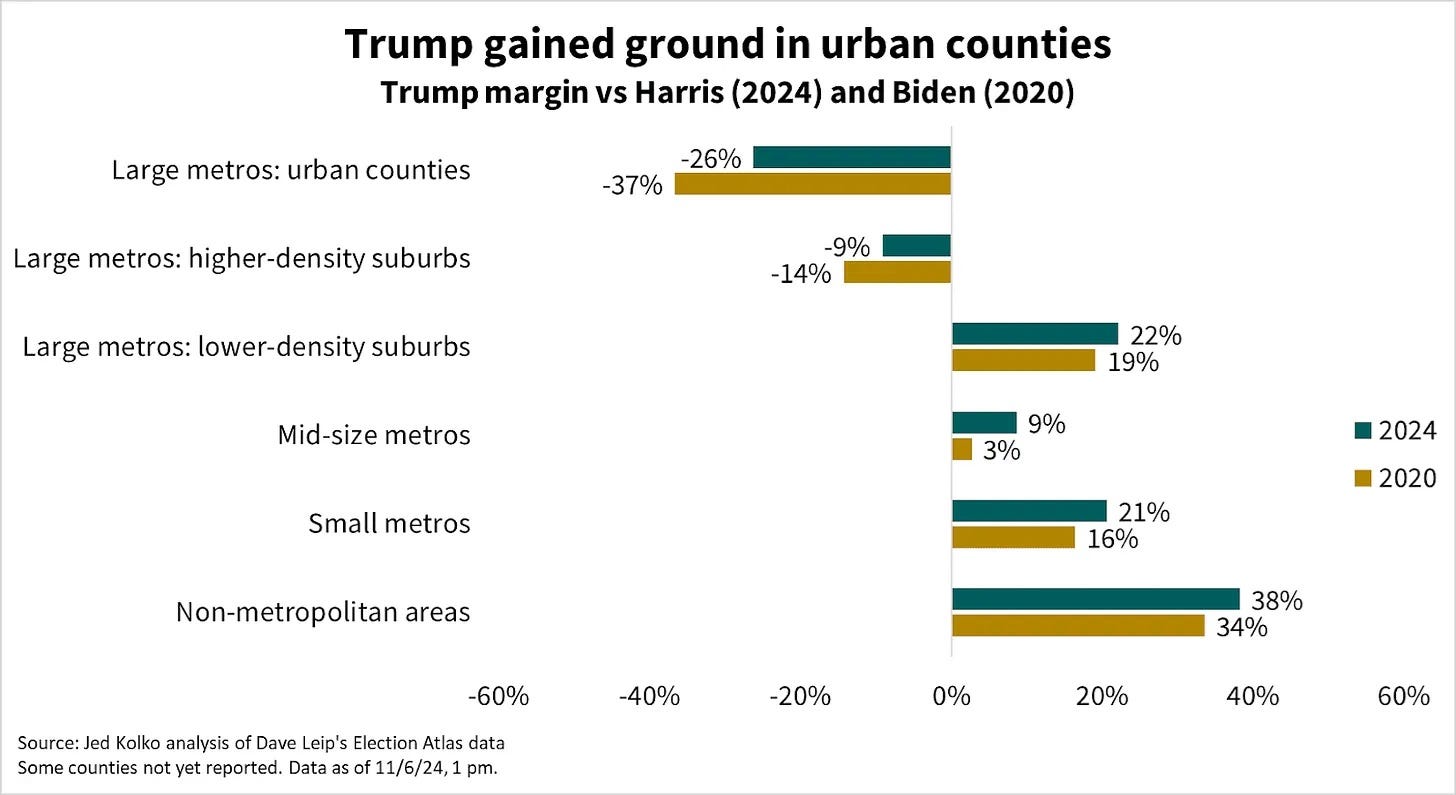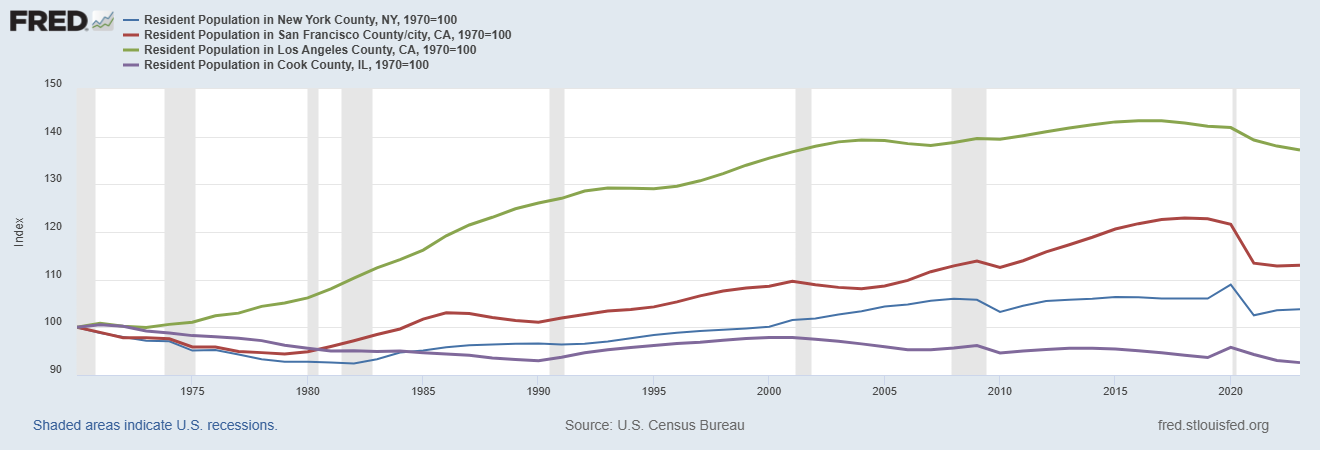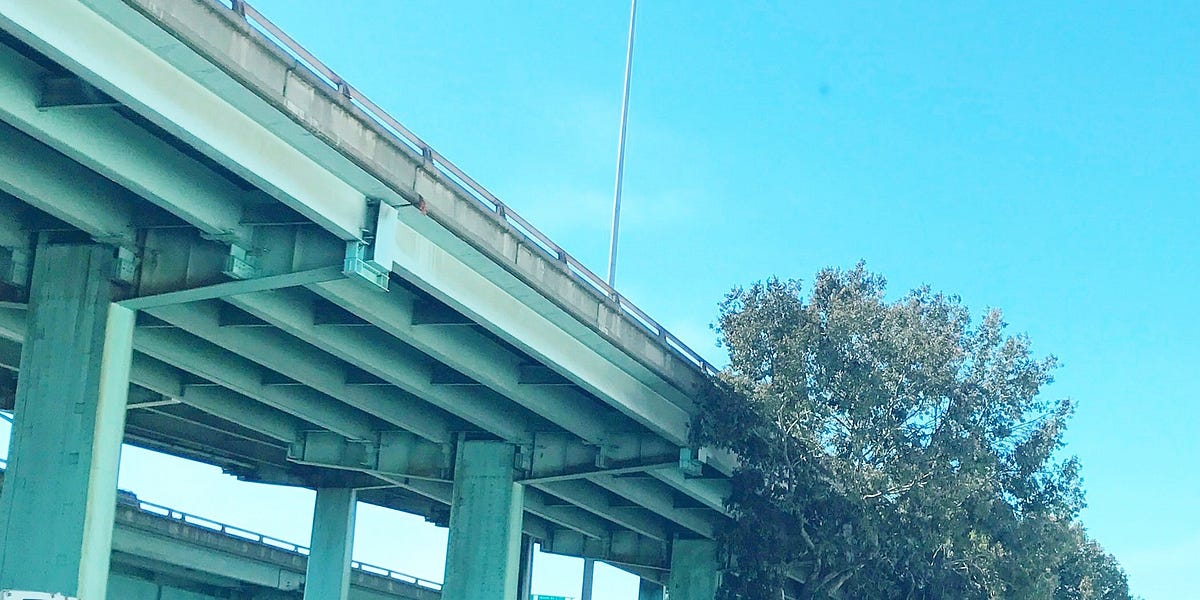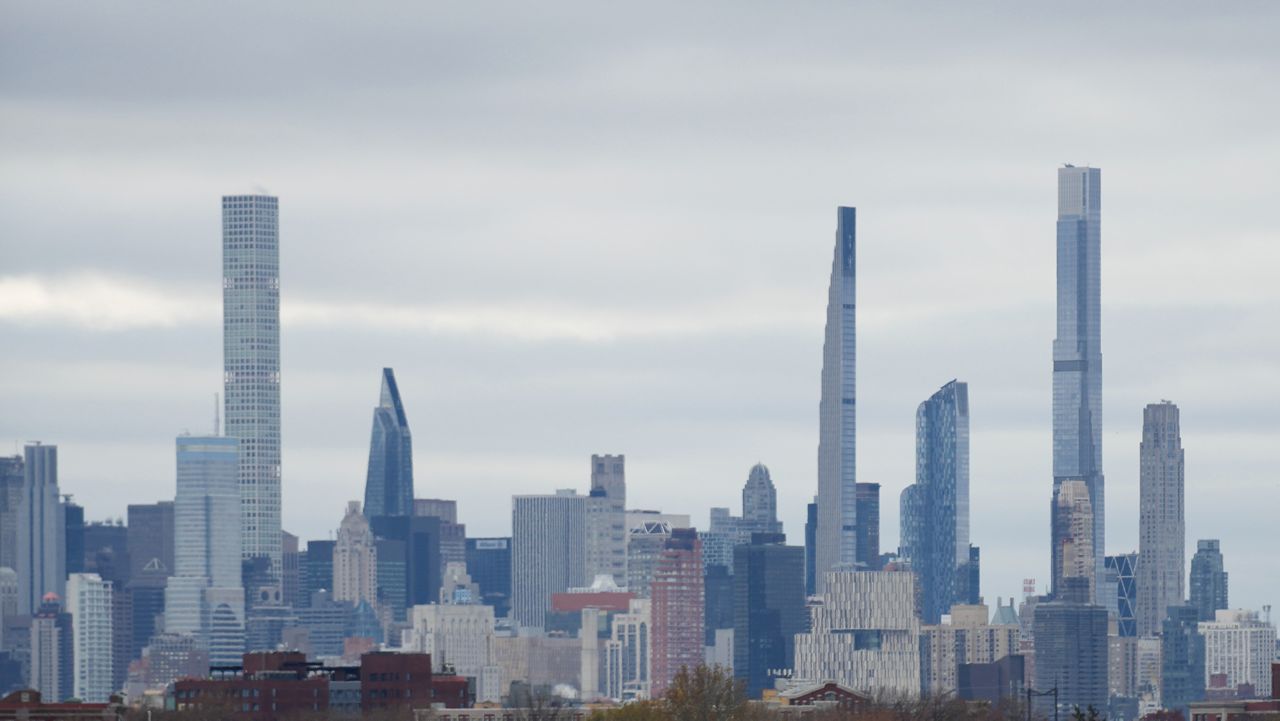cawacko
Well-known member
Noah Smith is a professor, economist and cultural commentator. He's a liberal guy but not a political partisan/ideologue so I find his work interesting. Outside of myself, I think there are very few people on here - if any - that live in (big) cities here but nonetheless for those interested in what's going on (and not just from Fox News' perspective) this a great read.
Cities have their ups and down like everywhere else. Right now we're seeing a period of down. But that doesn't mean it will always stay this way. (The article was too long to post it all)
Donald Trump’s victory last week wasn’t the only important election result. Big cities in California shifted away from so-called “progressive” governance. In San Francisco, progressive champion Aaron Peskin was soundly defeated in the mayoral race, and his vacated seat was won by a moderate. Peskin’s close ally, Dean Preston, was unseated by moderate challenger Bilal Mahmood, and the Board of Supervisors is expected to lose its progressive majority. In Los Angeles progressive district attorney George Gascón lost his reelection bid, while Oakland’s Pamela Price was recalled. This followed a national trend of progressive DAs getting the boot; meanwhile, San Francisco’s moderate DA Brooke Jenkins, who succeeded the notorious Chesa Boudin after the latter was recalled, easily cruised to reelection.
It’s possible to interpret these victories as part of a general revolt against progressive governance in big cities. At the local level that’s a good thing, since that governance has proven remarkably poor. But at the national level, the urban revolt against probably helped usher in another four years of Donald Trump. Although large metros still voted for the Democrats overall, they swung harder towards Trump than any other geographic region:

Source: Jed Kolko
Derek Thompson has some more numbers:
Of course I don’t know how big of a factor this was in Trump’s victory, but I’m not actually sure that even matters. Barro is largely correct about the sad state of blue cities, and it’s the inhabitants of those cities who are suffering the most from that failure of governance. The most important reason to fix those cities isn’t to help Democrats get elected at the national level, but because it would make life better for urban residents themselves. The swing toward Trump is simply an illustration of just how angry city dwellers are.
Starting around the 1980s, though, America experienced an urban revival. Big cities began to gain back some of the population they had lost:

There were a number of reasons for this revival. One was the rise of knowledge industries like tech, finance, and business services, which tend to cluster together in cities. As Enrico Moretti shows in The New Geography of Jobs, human capital tended to cluster in big cities after around 1980 or so; Richard Florida also famously documented this in The Rise of the Creative Class. Here’s some data from Jed Kolko for 2000-2014 that’s pretty representative of the general shift:

 www.noahpinion.blog
www.noahpinion.blog
Cities have their ups and down like everywhere else. Right now we're seeing a period of down. But that doesn't mean it will always stay this way. (The article was too long to post it all)
The blue cities must be fixed
If you want to govern the nation, you should first be able to govern San Francisco, New York, and Los Angeles.
Donald Trump’s victory last week wasn’t the only important election result. Big cities in California shifted away from so-called “progressive” governance. In San Francisco, progressive champion Aaron Peskin was soundly defeated in the mayoral race, and his vacated seat was won by a moderate. Peskin’s close ally, Dean Preston, was unseated by moderate challenger Bilal Mahmood, and the Board of Supervisors is expected to lose its progressive majority. In Los Angeles progressive district attorney George Gascón lost his reelection bid, while Oakland’s Pamela Price was recalled. This followed a national trend of progressive DAs getting the boot; meanwhile, San Francisco’s moderate DA Brooke Jenkins, who succeeded the notorious Chesa Boudin after the latter was recalled, easily cruised to reelection.
It’s possible to interpret these victories as part of a general revolt against progressive governance in big cities. At the local level that’s a good thing, since that governance has proven remarkably poor. But at the national level, the urban revolt against probably helped usher in another four years of Donald Trump. Although large metros still voted for the Democrats overall, they swung harder towards Trump than any other geographic region:

Source: Jed Kolko
Derek Thompson has some more numbers:
Josh Barro wrote an insightful post-election post arguing that big cities’ failure to curb urban disorder, fiscal waste, and soaring housing costs drove their inhabitants away from the Democratic party. Some key excerpts:In the past two cycles, Democrats could comfort themselves by counting on urban counties to continue moving left even as rural areas shifted right. That comfort was dashed last night, at least among counties with more than 90 percent of their results reported. In the New York City metro area, New York County (Manhattan) shifted nine points right, Kings County (Brooklyn) shifted 12 points right, Queens County shifted 21 points right, and Bronx County shifted 22 points right. In Florida, Orange County (Orlando) shifted 10 points right and Miami-Dade shifted 19 points right. In Texas, Harris County (Houston) and Bexar County (San Antonio) both shifted eight points right and Dallas County shifted 10 points right. In and around the “Blue Wall” states, Pennsylvania’s Philadelphia County shifted five points right, Michigan’s Wayne County (Detroit) shifted nine points right, and Illinois’ Cook County (Chicago) shifted 11 points right.
I write this to you from New York City, where we are governed by Democrats and we pay the highest taxes in the country, but that doesn’t mean we receive the best government services. Our transportation agencies are black holes for money, unable to deliver on their capital plans despite repeated increases in the dedicated taxes that fund them, because it costs four times as much per mile to build a subway line here as it does in France, and because union rules force the agency to overstaff itself, inflating operating costs. Half of bus riders don’t pay the fare, and MTA employees don’t try to make them. Emotionally-disturbed homeless people camp out on the transit system…even though police are all over the place (at great taxpayer expense) they don’t do much about it, and I can’t entirely blame them since our government lacks the legal authority to keep these people either in jail or in treatment. The city cannot stop people from shoplifting, so most of the merchandise at Duane Reade is in locked cabinets…chools remain really expensive for taxpayers even as families move away, enrollment declines, and chronic absenteeism remains elevated. Currently, we are under state court order to spend billions of our dollars to house migrants in Midtown hotels that once housed tourists and business travelers. Housing costs are insane because the city makes it very hard to build anything — and it’s really expensive to travel here, partly because so many hotels are now full of migrants, and partly because the city council literally made it illegal to build new hotels. And as a result of all of this, we are shedding population — we’re probably going to lose three more congressional districts in the next reapportionment. And where are people moving to? To Sun Belt states, mostly run by Republicans, where it is possible to build housing and grow the economy…
[A]ll of this is why I think Democrats’ approach to the cost-of-living issues…has fallen so flat. The Democratic argument is, more or less, “look at all my programs” — all the things I’m going to have the government do to make life easier for you…I think Americans look around at how it goes when the government actually tries to help, and they have a healthy skepticism about how helpful the government is really going to be, and about whether the benefits are really going to flow to them. Democrats are making too many promises; they instead need to pick a few things for the government to do really well, with a focus on benefits to the broad public rather than to the people being paid to provide the services, instead of trying to do a zillion different things and doing them badly at great expense[.]
Of course I don’t know how big of a factor this was in Trump’s victory, but I’m not actually sure that even matters. Barro is largely correct about the sad state of blue cities, and it’s the inhabitants of those cities who are suffering the most from that failure of governance. The most important reason to fix those cities isn’t to help Democrats get elected at the national level, but because it would make life better for urban residents themselves. The swing toward Trump is simply an illustration of just how angry city dwellers are.
The blue city renaissance, 1980-2012
It’s important to remember that just a few years ago, the general consensus was that big cities in America were doing really well. In 2017, Will Wilkinson cited the success of American cities as a reason to reject Trump:Wilkinson’s paean to big cities was the culmination of decades of real success. In the middle of the 20th century, America’s cities had been hollowed out, by a combination of soaring urban crime and the lure of the suburbs. In the 1970s, big metropolises were still losing population. NYC almost went bankrupt.[W]hen Trump talks about cities, he presents a fearsome caricature that bears little resemblance to the real urban landscape…He persists in his efforts to slur cities as radioactive war zones because the fact that America’s diverse big cities are thriving relative to the whiter, less populous parts of the country suggests that the liberal experiment works…[T]he American metropolis is more peaceful and prosperous than it’s been in decades…Yes, cities have their share of failing schools. But they also have some of the best schools in the country and are hotbeds of reform and innovation…America’s most diverse, densely populated and well-educated cities are generating an increasing share of the country’s economic output.
Starting around the 1980s, though, America experienced an urban revival. Big cities began to gain back some of the population they had lost:

There were a number of reasons for this revival. One was the rise of knowledge industries like tech, finance, and business services, which tend to cluster together in cities. As Enrico Moretti shows in The New Geography of Jobs, human capital tended to cluster in big cities after around 1980 or so; Richard Florida also famously documented this in The Rise of the Creative Class. Here’s some data from Jed Kolko for 2000-2014 that’s pretty representative of the general shift:

The blue cities must be fixed
If you want to govern the nation, you should first be able to govern San Francisco, New York, and Los Angeles.

